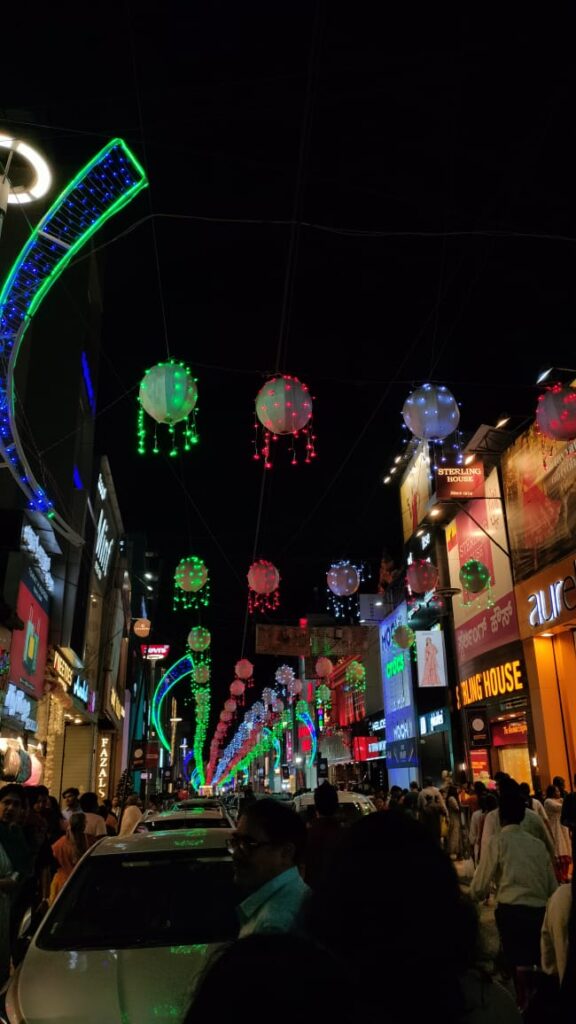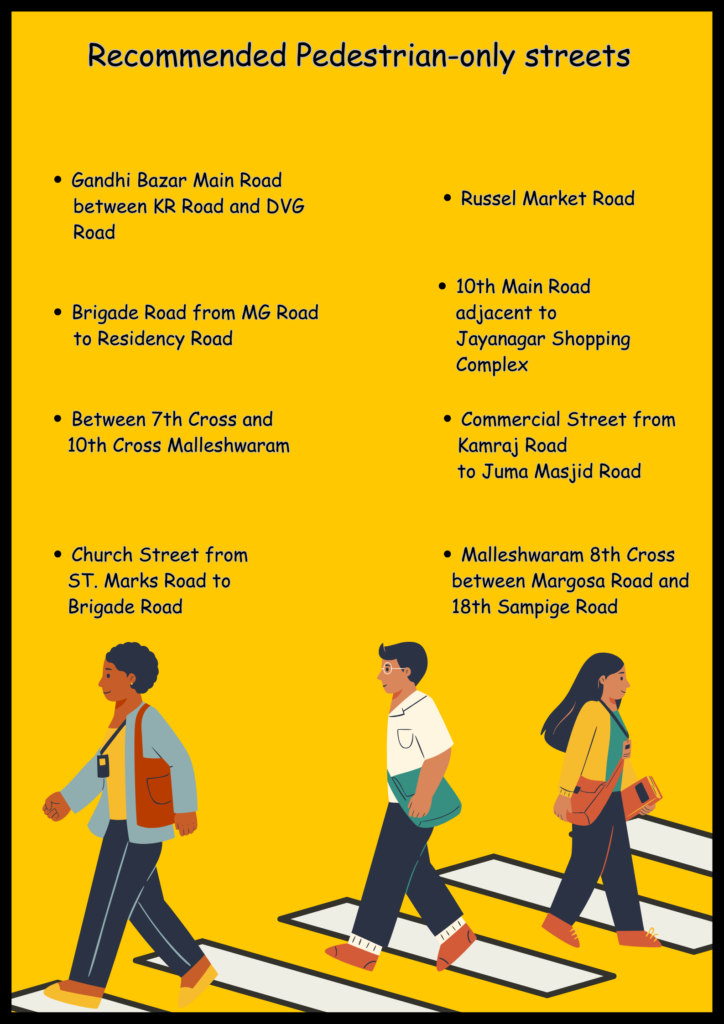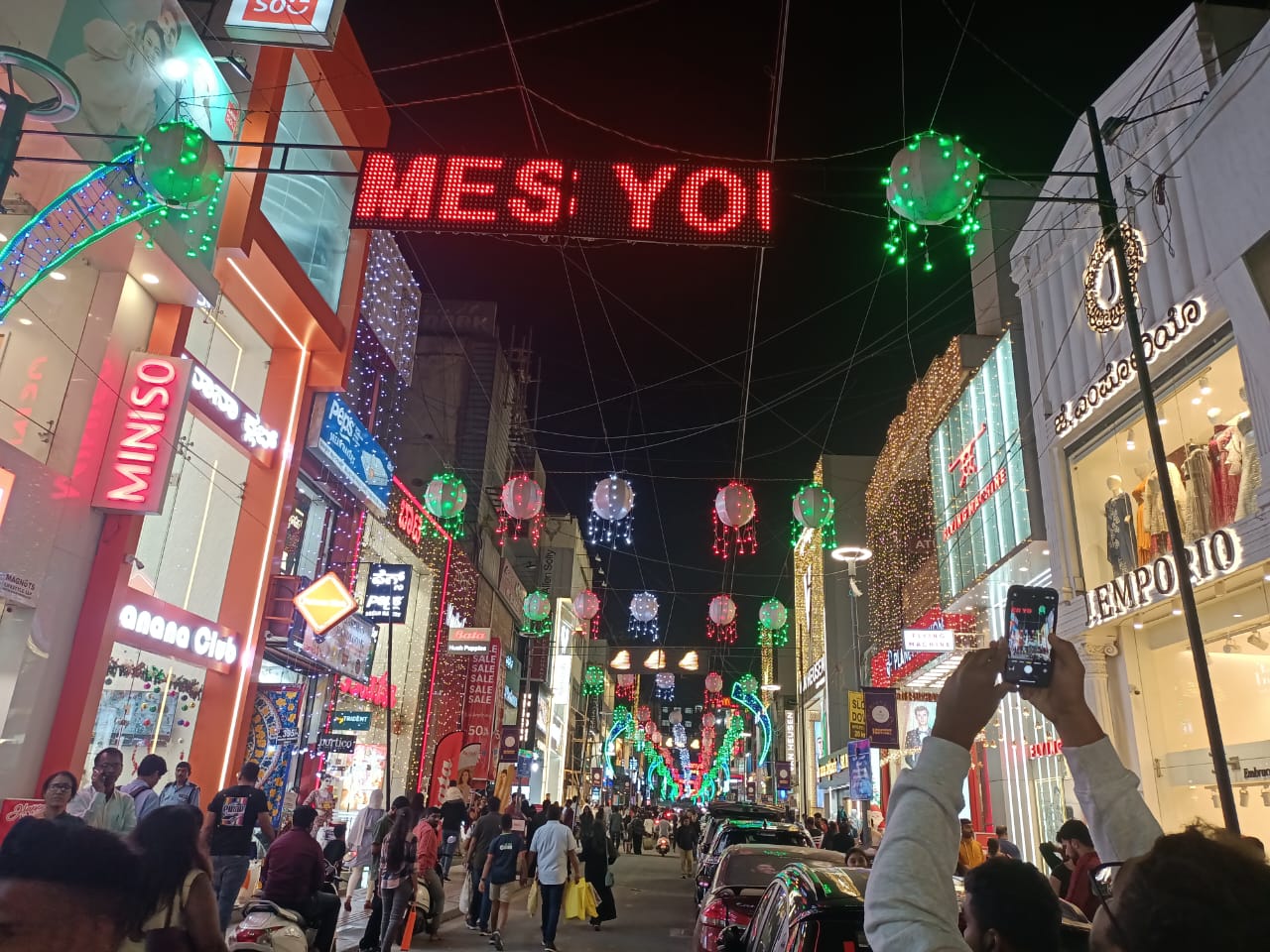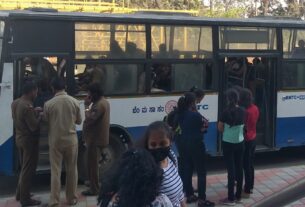While shoppers hope for pedestrian-only streets, shopkeepers are afraid of losing business.
The making of “pedestrian-only streets”, a guideline laid down by the Directorate of Urban Land Transport (DULT) remains on paper, even as many pedestrians wish its implementation. Shopkeepers are opposed to it however; they say it will affect their business. Officials at the DULT say for the theory to be put into practice, enough number requests or complaints from the public has to be received.
Kailash, a pedestrian and shopper at Commercial Street said that the market street becomes a nightmare to walk on during weekends. “This place becomes so crowded after 5 or 6 p.m. on weekends, that you wouldn’t even get a place to stand. While footpaths are occupied by people and vendors, roads are occupied by cars.”
Meenakshi, another pedestrian at the street said, “I avoid visiting Commercial Street on weekends. The place gets very crowded; covering a 50 meter distance might take you 20 minutes.” She added that along with the constant movement of cars, crossing the road to a shop across becomes difficult and time consuming.

Shreya, another pedestrian and frequent shopper at the street recalled when she visited the place during Diwali the previous year. “I liked the crowd, it added to the festive, fun mood. However, the vehicles were very disturbing. A big traffic jam had formed on the road and there was so much honking,” Malavika, her friend said, “If the roads were occupied by vehicles, crowds gathered around the vendors and stalls on the pavements, leaving very little space for pedestrians to walk.” They both wanted that the street be open for pedestrians only, at least on festive days. “Vehicles, especially four-wheelers should be re-routed from here when crowds are thick.”
Mayank Rohtagi, secretary, Commercial Street Association spoke against restricting vehicle movement on the street: citing both losses to shopkeepers and customers’ commuting inconvenience as reasons. He said, “The most feasible way to reach the street is via private vehicles. Metro stations or taxi/cab stands are not nearby, as in Church Street. If private vehicles are banned, it will lead to a decreased footfall, and result in shop owners and businesses incurring losses.”
A traffic police constable near the street said that he and other officers deployed at the street to manage the crowd on weekends or holidays find the job difficult. “Traffic becomes unmanageable on Saturdays with so many people visiting the market,” he said. “Restricting or prohibiting vehicle entry during the evenings will ease pedestrian movement, as markets are for people, not vehicles,” he added.
According to the ‘Comprehensive Mobility Plan for Bengaluru’ prepared by the DULT, eight streets with “significantly large pedestrian traffic and commercial establishments” were recommended to be declared as pedestrian-only streets on weekends and holidays. Commercial Street from Kamaraj Road to Jumma Masjid Road is among this list, alongwith Gandhi Bazar main road, Russel Market road, Church Street from St. Marks Road to Brigade Road, Brigade Road from MG Road to Residency Road etc.
Monica Kashkari, Special Officer at the DULT said that the DULT guideline was proposed keeping in mind the safety and unhindered mobility of pedestrians. “The streets recommended are ones which see heavy crowds on weekends or festive days and have multiple shops or stalls on them. If vehicular movement through them is restricted from time to time, it will be more convenient and also safer for the pedestrians,” she added.
She further said, “If residents, resident welfare organizations or citizen groups demand “for pedestrians only” streets, we, along with other government authorities and private partners can execute it. I believe not only will the public benefit from the initiative, but it will also be kinder on the environment.” She added that the pedestrianization of these streets at certain intervals can happen if there is enough agitation and momentum from the public.

A report by the DULT titled, Church Street First – Impact Assessment of Pedestrianizing an Urban Street in terms of Quality of Life delineates the positive impacts the partial pedestrianization of Church street has had on environment and people. With more restaurants opening up outdoor spaces for eating, reduced air and noise pollution and the most popular choice for a day out of many Bangaloreans, the partial pedestrianization of Church Street was a success, as mentioned in the report.
Chetan Sodaye, Senior Program Associate, Integrated Transport at the World Resources Institute (WRI) India said, “Creating ‘pedestrian-only’ zones on certain special days or weekends is a commendable initiative. This aligns with the principles of Avoid, Shift, and Innovate (ASI) in urban mobility.” He added that by promoting pedestrian-only streets during peak footfall times, vehicular congestion can be significantly reduced, public safety enhanced, and more vibrant urban spaces created.
He, however, also spoke of the challenges in implementation in the form of resistance from businesses concerned about potential drops in customers due to restricted vehicle access. “Additionally, there might be logistical challenges in managing alternative routes for vehicular traffic. Public awareness and engagement campaigns are crucial to address concerns and garner support for such initiatives,” he added.
Complete street designs that accommodate all users: pedestrians, cyclists, and public transports; traffic calming measures such as speed breakers, raised crossings, and narrower lanes; opening up public spaces and plazas and enhanced public transportation are some measures which should be adopted, he said. “These initiatives will not only enhance safety but also contribute to creating more inclusive and sustainable cities, making Namma Bengaluru liveable again,” he explained.




